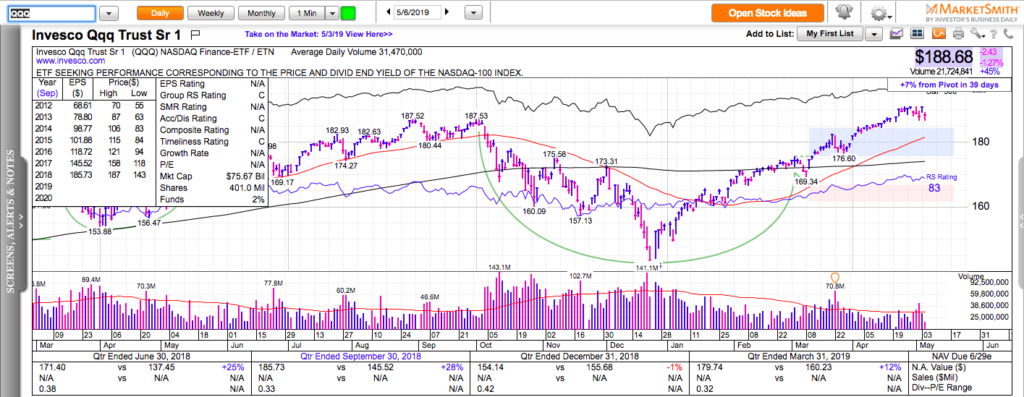All charts in this post are powered by MarketSmith
The best risk-to-reward trading entries in a bull market occur right after a 3-5% pullback. We just had one. The problem is that some 3-5% pullbacks turn into 10-20% corrections or into choppy sideways ranges, where only the most nimble active traders make money. This is what makes trading so challenging. The best returns usually exist when there are the most uncertainty and perceived risk.
How do we separate the pullbacks that are amazing buying opportunities from the pullbacks that could be the beginning of a lot more volatility and downside momentum? It is easier said than done.
I use the price action in momentum stocks and the market reaction to earnings. The results there are currently mixed. From one side, we saw some major breakdowns in TTD and UBNT. From another, many tech momentum stocks are showing notable relative strength by going sideways or breaking out: COUP, ROKU, TWLO, TEAM, etc.
It’s impressive how dip buyers managed to keep the S&P 500, the Nasdaq 100 and Russell 2000 above their 50-day moving averages despite the U.S. raising tariffs on China imports. Not selling off on bad news is typically how corrections end.
I lean on the bullish side but I fully understand that until SPY reclaims 290, the indexes and therefore many stocks are vulnerable; therefore, trading less and with a smaller position size continues to look like the most common-sense approach.
You understand the paradox, right. If we wait until SPY goes firmly above 290, we will miss some juicy opportunities. If we don’t, we risk getting chopped. The solution is to pick our spots and not to be constantly aggressive in the market. No one can capture all moves consistently.
Check out my last two trading books:
Swing Trading with options – How to Trade Big Trends for Big Profits
Top 10 Trading Setups – How to find them, hot to trade them, hot to make money with them.
